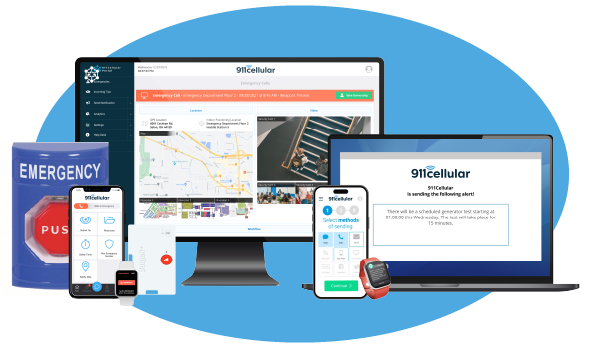New York’s "Retail Worker Safety Act": A New Era for Workplace Violence Prevention
New York has made a significant move to enhance retail worker safety by passing the Retail Worker Safety Act (S.8358C/A.8947C). This new law requires retail employers to develop and implement comprehensive programs aimed at preventing workplace violence. It addresses the growing concern over violence in retail environments. With new safety measures set to take effect in the coming years, this law highlights the importance of panic buttons, workplace violence prevention policies, and mobile safety apps in safeguarding retail employees.
Here’s what retail employers need to know about the law and how it will impact workplace safety.
Key Requirements of the Retail Worker Safety Act
The Retail Worker Safety Act imposes several requirements on retail employers, most of which take effect on March 4, 2025. Panic button requirements will not be enforced until January 1, 2027.
Workplace Violence Prevention Policy
Every retail employer must now maintain a comprehensive workplace violence prevention policy. The New York State Department of Labor will provide a model plan that companies can customize, so long as it meets or exceeds the minimum standards outlined by the law.
The policy must:
- Identify risk factors such as working late hours, handling money, working alone or having uncontrolled access to the workplace.
- List preventive measures, including establishing reporting systems for violent incidents and outlining procedures for addressing such situations.
- Include statutory information about violence against retail workers and available remedies.
- Prohibit retaliation against employees who report workplace violence or participate in related legal proceedings.
This policy ensures that retail workers know their risks and understand the protective measures.
Panic Button Requirements
One of the most significant aspects of the Retail Worker Safety Act is the panic button requirement. Employers with 500 or more retail employees nationwide must provide access to panic buttons throughout their physical locations. These panic buttons can be either physical or mobile-phone-based.
- Physical Panic Button: Employers choosing physical buttons must install devices that immediately contact the local 9-1-1 Public Safety Answering Point (PSAP), providing them with the worker’s location and dispatching law enforcement to the scene. These buttons must be easily accessible or wearable by employees.
- Mobile Phone-Based Panic Button: Employers opting for mobile-phone-based panic buttons must install them on employer-provided devices. Panic buttons may not track an employee’s location unless the button is triggered, ensuring privacy while still offering a robust safety solution.
Panic buttons ensure employees have instant access to emergency services, potentially reducing the time it takes to respond to dangerous situations.
Employee Training on Workplace Violence
Under the Retail Worker Safety Act, all retail employees must receive interactive training upon hire and annually after that. The state will provide retailers with training materials, but companies may create personalized training as long as it meets state requirements.
All training must cover:
- How to use panic buttons and other security devices.
- De-escalation tactics to manage potentially violent customers or coworkers.
- Active shooter drills and emergency procedures.
- Examples of safety measures workers can take to protect themselves.
Additionally, the training must communicate specific emergency exit routes and meeting places for employees during emergencies. This ensures that workers have the necessary knowledge and are prepared to respond effectively in high-risk situations.
Model Notice Requirement
Employers must provide all retail employees with a written notice of the workplace violence prevention policy. This notice must be given at the time of hire and during annual training sessions, ensuring that every employee knows their rights and the safety measures available. If necessary, the notice should be translated into the employee’s primary language to ensure full understanding.
The Future of Worker Safety
The Retail Worker Safety Act marks a significant turning point for retail worker safety in New York and sets the stage for similar legislation in other states. The law recognizes a troubling trend of violence against retail workers. It requires employers to take proactive measures to protect their employees through the use of panic buttons, workplace violence prevention policies and mobile safety apps.
As we look to the future, the Retail Worker Safety Act serves as a model for how technology can be integrated into safety programs to create a more secure environment for all employees. For more information about technology that can help keep your employees safe visit 911Cellular.com.







